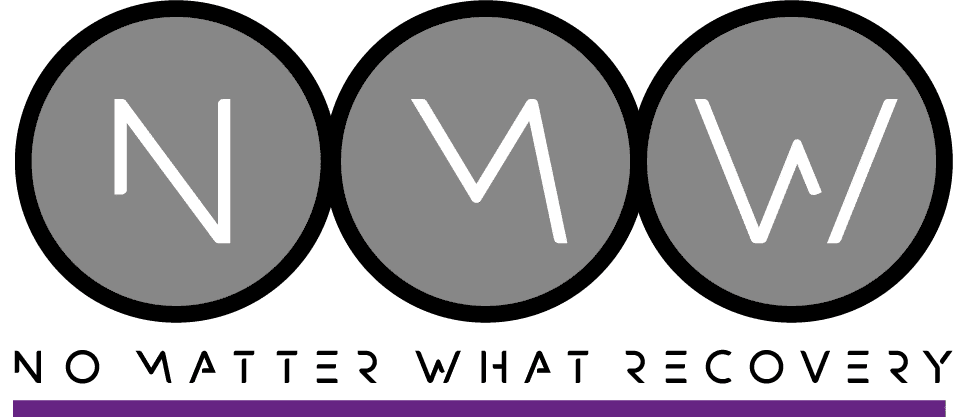When most people hear “whippets,” they might think of the slender racing dog breed. However, in the context of substance abuse, whippets refer to something far more dangerous—the recreational misuse of nitrous oxide gas. This comprehensive guide explores everything you need to know about whippets, their risks, and how to recognize the warning signs of abuse.
What Are Whippets?
Whippets are a slang term for nitrous oxide (N2O) when used recreationally as a dangerous inhalant. Also known as “laughing gas” or “hippie crack,” nitrous oxide is a colorless, sweet-smelling gas that has legitimate medical and commercial uses but becomes one of the most dangerous chemical substances when misused for its psychoactive effects.
The term “whippets” comes from one of the most common sources of recreational nitrous oxide: whipped cream dispensers and their small metal cartridges (called “whip-its” or “nangs”). These nitrous oxide canisters contain pressurized gas, which is typically released into balloons or inhaled directly for a brief but intense euphoric effect.
Common Street Names for Whippets
Nitrous oxide misuse goes by many names, including:
- Laughing gas
- Nitro
- NOS or Nossies
- Nangs
- Balloons
- Whip-its
- Hippie crack
- Sweet air
- Galaxy Gas
The Rising Prevalence of Whippet Abuse: Alarming Statistics
Recent studies reveal the widespread nature of nitrous oxide abuse, particularly among young people. According to the 2014 Global Drug Survey, which represents the largest survey of recreational drug use worldwide with 74,864 participants, nitrous oxide shows concerning prevalence rates:
- 38.6% lifetime prevalence in the UK
- 29.4% lifetime prevalence in the US
- In the UK, nitrous oxide was the eighth most commonly used substance
More recent data from The Lancet Public Health shows the problem is escalating:
- 22.5% of respondents in a 32,000-person survey across 22 countries had used nitrous oxide in their lifetime
- Almost 10% had used it in the past year
- Global increase from 10% in 2015 to 20% in 2021 over 7-year trends
- Among people aged 16-24 years, 24% used nitrous oxide in 2021 according to a survey of 592,000 people globally
In the United States, data from SAMHSA indicates that 3.0% of adolescents and 1.7% of adults aged 18 to 25 reported using inhalants within the past year in 2019, with prevalence continuing to increase.
How Nitrous Oxide Became a Recreational Drug
Nitrous oxide was first synthesized in 1772 and has been used medically since the 1840s as an anesthetic. Its euphoric effects were quickly discovered, leading to “laughing gas parties” in the 19th century. Today, nitrous oxide serves several legitimate purposes:
- Medical procedures including dental procedures as an anesthetic
- Food preparation as a propellant in whipped cream dispensers and cream cans
- Automotive enhancement to boost engine performance
- Industrial applications in manufacturing and welding
Despite these legitimate uses, the accessibility of nitrous oxide in everyday products has made it one of the most commonly abused inhalants. The CDC reports a sharp increase in adverse medical encounters associated with nitrous oxide misuse, particularly among teenagers and young adults who can easily obtain whippet canisters from grocery stores.
What Happens When Someone Uses Whippets?
Short-Term Effects of Nitrous Oxide
When inhaled, nitrous oxide rapidly enters the bloodstream and affects the central nervous system and body functions. Users typically experience:
Euphoric Effects:
- Intense euphoric effect and giddiness
- Uncontrollable laughter
- Feelings of floating or dissociation
- Auditory hallucinations or visual distortions
- Sense of time distortion
- Loss of inhibition
Physical Effects:
- Dizziness and lightheadedness
- Poor coordination and loss of balance
- Numbness in limbs and loss of sensation
- Nausea and potential vomiting
- Temporary hearing impairment
- Muscle weakness and loss of muscle tone
- Breathing trouble
- Loss of blood pressure
- Loss of consciousness
Duration of Effects
The effects of whippets are notoriously short-lived, typically lasting only 2-5 minutes. This brief duration often leads users to take straight shots repeatedly in quick succession, significantly increasing health complications and putting their lives at risk.
How Are Whippets Used?
Understanding the methods of nitrous oxide inhalation can help identify potential misuse:
Common Methods of Use
- Whipped Cream Dispensers: Users discharge nitrous oxide canisters into balloons or directly into their mouths
- Medical-Grade Canisters: Some users access larger, professional-grade nitrous oxide tanks
- Household Products: Misuse of whipped cream dispensers and other household items
- Balloon Method: The most common technique involves filling balloons with gas and inhaling from them
Why Balloons Are Used
Many users prefer the balloon method because:
- It allows the gas to warm slightly before inhalation
- Reduces risk of frostbite from extremely cold gas
- Enables re-breathing to prolong effects
- Appears less suspicious than direct inhalation from canisters
The Legal Status of Whippets
Nitrous oxide itself is completely legal to purchase and possess in most jurisdictions. However, there are legal risks around whippets:
What’s Legal
- Purchasing nitrous oxide for legitimate purposes
- Possessing whipped cream chargers
- Using nitrous oxide in medical procedures, culinary, or automotive applications
What’s Illegal
- Inhaling nitrous oxide for intoxication in many states and countries
- Selling nitrous oxide with knowledge of intended recreational use
- Driving under the influence of nitrous oxide (DUI charges apply)
- Providing nitrous oxide to minors for recreational purposes
This legal ambiguity makes nitrous oxide easily accessible, contributing to its popularity as a “legal high” despite being an illicit drug when used recreationally.
Are Whippets Dangerous? Understanding the Serious Health Risks
Despite common misconceptions about their safety, whippets pose significant health risks that can be immediate and life-threatening. The danger of whippits extends far beyond what most users realize, as evidenced by recent medical surveillance data.
The CDC’s Michigan surveillance study found that the most common clinical effects among nitrous oxide poison center cases were:
- Tachycardia (19.4%)
- Other neurologic symptoms (18.8%)
- Numbness (16.7%)
Immediate Dangers and Toxic Effects
Oxygen Deprivation (Hypoxia) The most serious immediate risk is asphyxiation. Nitrous oxide displaces oxygen in the lungs, reducing oxygen levels and oxygen flow to vital body tissues. Users can become unconscious and suffer brain damage or sudden death from lack of oxygen. This lack of oxygen can cause dead brain cells and permanent neurological impairment.
Cardiac Complications Whippet inhalation can cause:
- Irregular heart rhythm and irregular heartbeats
- Heart dysfunction and potential heart failure
- Dangerous drops in blood pressure affecting the heart
Physical Trauma Nitrous oxide causes rapid loss of coordination, leading to:
- Falls and serious injuries
- Head trauma from losing consciousness
- Burns and cuts from hot dispensers
- Broken bones from sudden collapse
Frostbite and Thermal Injuries Direct inhalation from pressurized containers can cause:
- Severe frostbite to throat, lips, and lungs
- Chemical burns from rapid gas expansion
- Permanent damage to respiratory system
Long-Term Effects and Neurological Complications
Vitamin B12 Depletion and Inactivation of Vitamin Chronic nitrous oxide use interferes with the absorption of vitamin B12, an essential vitamin crucial for proper body functions. Research published in PubMed shows this depletion of vitamin B12 and inactivation of vitamin leads to:
- Severe anemia affecting blood cells
- Combined degeneration of the spinal cord
- Demyelinating neuropathy affecting the dorsal column
- Memory problems and cognitive impairment
- Loss of coordination and muscle atrophy
Neurological Effects and Brain Damage Extended use causes serious neurological complications. A study in The Journal of Neurology documented cases of:
- Peripheral neuropathy (nerve damage in hands and feet)
- Spinal cord degeneration
- Permanent memory loss affecting cognitive functions
- Balance and coordination problems
- Neurological symptoms that may be irreversible
Bone Marrow Damage and Blood Cell Effects Long-term use can cause:
- Bone marrow damage affecting blood cell production
- Severe anemia from damaged blood cells
- Elevated levels of harmful substances in the body
Other Serious Health Complications
- Kidney damage affecting body functions
- Liver damage from toxic effects
- Reproductive system damage
- Muscle atrophy and weakness
- Loss of appetite and nutritional deficiencies
Emerging Health Risks: Blood Clots and Cardiac Events
Recent research has identified new dangers. Studies documented in clinical literature show that chronic nitrous oxide abuse can cause:
- Venous thromboembolism (VTE) due to elevated homocysteine levels
- Increased risk of blood clots from vitamin B12 deficiency
- Coronary artery disease through enhanced platelet activation
- ST-elevation myocardial infarction in young users
Psychiatric Complications
The effects of whippet abuse extend to mental health:
- Emotional dysregulation
- Psychiatric symptoms including anxiety and depression
- Intense drug cravings leading to compulsive use
- Psychiatric complications that require specialized treatment
Signs of Whippet Abuse and Symptoms
Recognizing whippet abuse can be challenging due to the drug’s short-acting nature, but several warning signs may indicate regular use:
Physical Signs and Symptoms
- Frequent sore throats or respiratory irritation
- Unexplained facial rashes or burns around the mouth
- Bruises or injuries from falls due to lack of coordination
- Strange chemical odor on breath or clothing
- Pale complexion or signs of anemia from blood cell damage
- Neurological symptoms like tingling or numbness
- Breathing trouble or respiratory issues
Behavioral Changes and Effects of Whippet Addiction
- Possession of small metal cartridges or deflated balloons
- Unusual interest in whipped cream or kitchen supplies
- Memory problems or “spacing out” affecting cognitive functions
- Decreased academic or work performance
- Social withdrawal or new peer groups
- Unexplained giddiness followed by lethargy
- Signs of whippet abuse in daily behavior
Paraphernalia to Look For
- Empty nitrous oxide canisters
- Balloon remnants with chemical smell
- Whipped cream dispensers without culinary use
- Crackers or dispensing devices
- Large quantities of whipped cream canisters from grocery stores
The Effects of Whippets: Understanding Addiction Potential
Yes, whippets can be highly addictive substances. While nitrous oxide doesn’t typically cause severe physical dependence like opioids, it can lead to inhalant use disorder and compulsive use patterns.
Research in The Lancet Public Health indicates that nitrous oxide has addictive potential, with studies showing that all participants in one small study met criteria for substance abuse and dependence according to the Diagnostic and Statistical Manual of Mental Disorders.
How Addiction Develops
The effects of whippet use can quickly lead to addiction through:
- Tolerance: Users need increasing amounts to achieve the same euphoric effect
- Psychological Dependence: Intense drug cravings and obsessive thoughts about using
- Compulsive Use: Inability to control or stop using despite negative effects
- Withdrawal: Anxiety, depression, and intense cravings when not using
Signs of Substance Use Disorder
According to research from multiple studies, warning signs include:
- Using whippets despite knowing the health complications
- Inability to stop or control use despite harmful effects
- Neglecting responsibilities to use whippets
- Spending excessive money on whippet canisters
- Using alone or in dangerous situations
- Continuing use despite relationship or health problems
- Experiencing effects of whippet addiction that interfere with daily life
Demographics and Risk Factors
Surveillance data reveals concerning patterns in whippet abuse:
- Median age of users with serious complications: 21-23 years
- 37-59% of users were not employed or in education
- Markers of social deprivation are associated with nitrous oxide use
- Youth with psychiatric disorders are 91% more likely to use nitrous oxide
Comprehensive Treatment for Whippet Abuse and Addiction
Getting Professional Help
If you or someone you know is struggling with whippet abuse, comprehensive treatment is available at specialized treatment centers:
Outpatient Treatment Programs offer:
- Individual and group therapy sessions
- Cognitive-behavioral therapy (CBT)
- Motivational interviewing techniques
- Relapse prevention planning
- Family therapy and support
Intensive Treatment Programs (IOP) provide:
- Structured treatment while maintaining daily responsibilities
- Multiple therapy sessions per week addressing the effects of whippits
- Peer support groups
- Medical monitoring by a medical professional
Inpatient Treatment may be necessary for:
- Severe addiction cases with neurological complications
- Co-occurring mental health disorders
- Multiple failed outpatient attempts
- Medical complications from long-term use
Addressing the Journey to Recovery
Effective comprehensive treatment addresses why someone started using whippets:
- Mental health disorders like anxiety or depression
- Trauma or emotional pain
- Social pressures or peer influence
- Lack of healthy coping mechanisms
- Underlying psychiatric complications
For individuals in the LGBTQ+ community, specialized treatment approaches are available. Learn more about LGBTQ+ affirming addiction treatment and how trauma can affect recovery.
Medical Treatment for Health Complications
Treatment may include:
- Intramuscular vitamin B12 injections to address vitamin deficiency
- Monitoring of blood cells and bone marrow function
- Treatment for neurological effects and complications
- Cardiac monitoring for heart-related issues
- Respiratory support for breathing problems
Understanding trauma and substance abuse connections is crucial for comprehensive recovery.
Prevention and Education About the Dangerous Effects
Understanding the Full Scope of Harm
Education must emphasize that the effects of whippets include:
- Immediate risk of sudden death from asphyxial deaths
- Long-term neurological damage affecting brain cells
- Serious health complications requiring medical intervention
- Potential for developing substance use disorder
- Legal risks despite easy availability in household products
Talking to Young People About the Potential Dangers
Prevention starts with honest, factual conversations about the real dangers:
- Explain that “legal” doesn’t mean “safe”
- Discuss the serious health risks, including neurological effects
- Address peer pressure and decision-making skills
- Provide healthy alternatives for stress relief
- Warn about the addictive nature of these substances
For parents dealing with addiction in the family, understanding family roles in addiction can be helpful.
Warning Signs for Parents and Educators
Stay alert for:
- Unexplained purchases of whipped cream from grocery stores
- Small metal objects or balloon remnants
- Changes in behavior or academic performance indicating effects of whippet use
- New social groups or secretive behavior
- Signs of cognitive impairment or poor coordination
Educational resources about addiction prevention can help families understand risk factors.
Comparing Whippets to Other Substances
While some users may think whippets are safer than other substances, including alcohol or other drugs, the reality is that nitrous oxide misuse carries unique and serious risks:
- Unlike alcohol, whippets can cause immediate death from asphyxiation
- The accessibility in everyday products makes them particularly dangerous for teens
- The potential for neurological damage is severe and often irreversible
- The combination of legal availability and dangerous effects creates a perfect storm
For those struggling with multiple substances, dual diagnosis treatment addresses co-occurring disorders.
Long-Term Health Effects and Recovery
Understanding Term Health Effects
The long-term effects of whippet abuse can be devastating:
- Permanent neurological impairment affecting cognitive functions
- Chronic vitamin B12 deficiency requiring ongoing medical treatment
- Bone marrow damage that may not fully recover
- Kidney damage and other organ complications
- Psychiatric symptoms that persist even after stopping use
The Path to Recovery
Recovery from whippet addiction involves:
- Comprehensive medical evaluation to assess damage
- Treatment of vitamin deficiencies and neurological complications
- Intensive therapy to address underlying issues
- Family therapy to rebuild relationships
- Long-term monitoring of health complications
- Ongoing support to prevent relapse
For those needing structured support, intensive outpatient programs provide comprehensive care while maintaining daily responsibilities.
Specialized Treatment Considerations
LGBTQ+ Community and Whippet Abuse
Research shows higher rates of substance abuse in the LGBTQ+ community. Specialized programs addressing LGBTQ+ substance abuse understand unique challenges including:
- Internalized homophobia contributing to substance use
- Social pressures and discrimination
- Need for affirming treatment environments
Mental Health and Co-Occurring Disorders
Many individuals struggling with whippet abuse also face mental health challenges. Our mental health rehab services address:
- Anxiety and depression
- Trauma-related disorders
- Dual diagnosis treatment needs
Therapeutic Approaches
Effective treatment utilizes evidence-based therapies:
- Cognitive Behavioral Therapy (CBT) for thought pattern modification
- Dialectical Behavior Therapy (DBT) for emotional regulation
- EMDR therapy for trauma processing
- Group therapy for peer support
Getting Help for Substance Abuse
No Matter What Recovery specializes in comprehensive treatment for individuals struggling with substance abuse, including inhalant use disorders like whippet addiction. Our evidence-based programs address both the addiction and underlying mental health issues that contribute to substance use.
Recovery is possible, and you don’t have to face addiction alone. Our treatment center provides the specialized care needed to address the complex effects of whippet abuse and support your journey to recovery. Contact our compassionate team today to learn how we can help you or your loved one begin the path to lasting sobriety.

Dr. Eric Chaghouri is our Medical Director at No Matter What Recovery. Since completing his forensic psychiatry fellowship, he has established a successful and thriving practice in Southern California, focusing on treatment of co-occurring psychiatric and addictive disorders.

Dr. Eric Chaghouri is our Medical Director at No Matter What Recovery. Since completing his forensic psychiatry fellowship, he has established a successful and thriving practice in Southern California, focusing on treatment of co-occurring psychiatric and addictive disorders.







